
Understanding the structure of a skeletal muscle cell.. Created by Raja Narayan.
- Subject:
- Anatomy/Physiology
- Biology
- Life Science
- Material Type:
- Lesson
- Provider:
- Khan Academy
- Provider Set:
- Khan Academy
- Author:
- Raja Narayan
- Date Added:
- 09/18/2013

Understanding the structure of a skeletal muscle cell.. Created by Raja Narayan.
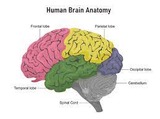
Basic anatomy of the brain: cross section of brain.

This video tells about description of gross anatomy of eye described in Ayurveda
#Ayurveda #eayurveda #elearning #eclasses #Shalyakya #anatomy of eye #cbpacs.
Ayurveda is the ancient science and still its effective and time tested since long. Sushruta is considered as Godfather of surgery till date. Sushruta Samhita is mainly focuses on Shalya tantra (Surgery of Ayurveda) and also Shalakya tantra which includes Ophthalmology, ENT and densitry. Eye is described in most elaborative and scientific manner in ayurveda. Anatomy and description of eye diseases simulates with modern ophthalmology. As in ophthalmology classification based on structure eg disease of the lids, conjunctiva, cornea etc . Same way diseases are classified as diseases of the vartma, shuklamandala, krishna mandala etc.
Also watch
https://youtu.be/az1VKtO84Co
https://youtu.be/KUg-fdepP2M
https://youtu.be/_6VRSO_HX54
https://youtu.be/9DXw0_0Nrcg
https://youtu.be/Lm9yGT6HTA8

This resource is a video abstract of a research paper created by Research Square on behalf of its authors. It provides a synopsis that's easy to understand, and can be used to introduce the topics it covers to students, researchers, and the general public. The video's transcript is also provided in full, with a portion provided below for preview:
"Citation rates and journal impact factor are the most widely used measures of influence in the academic world. But true impact extends well beyond the sphere of research. While quantifying this influence has remained incredibly challenging, social media and the alternative metrics its supplies are beginning to change that. In a new study reported in The American Journal of Sports Medicine, researchers looked at how these “altmetrics” correlate with traditional measures of impact in the field of orthopedics. Their findings point to the types of studies and publication venues that attain the greatest reach. The authors of the study analyzed 496 articles published across five high-impact journals in 2016: The Journal of Bone and Joint Surgery; Clinical Orthopaedics and Related Research; Acta Orthopaedica; Knee Surgery, Sports Traumatology, Arthroscopy; and The American Journal of Sports Medicine..."
The rest of the transcript, along with a link to the research itself, is available on the resource itself.
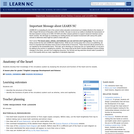
A lesson plan for Grade 7 English Language Development and Science. Students develop their knowledge of the circulatory system by studying the structure and function of the heart and its vessels.
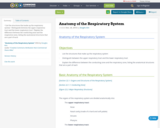
• List the structures that make up the respiratory system
• Distinguish between the upper respiratory tract and the lower respiratory tract
• Explain the difference between the conducting zone and the respiratory zone, listing the anatomical structures that are a part of each

Esta es una lección virtual sobre los conceptos básicos de cardiología, que permitirán identificar las estructuras del sistema cardiaco, su fisiología y el sistema eléctrico del corazón, lo cual es fundamental para poder comprender temas de mayor complejidad a nivel cardiaco.

Anavysos Kouros, c. 530 B.C.E., marble, 6' 4" (National Archaeological Museum, Athens). Speakers: Dr. Steven Zucker & Dr. Beth Harris. Created by Beth Harris and Steven Zucker.
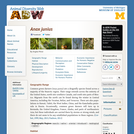
Anax junius: Information
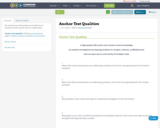
The questions provide guidance and reflection as educators choose anchor texts for collaboration.

Consumers often measure whether they got a good deal on a purchase by the difference between the original price and a sales price. The bigger the difference is, the better the deal feels. The original price a consumer is exposed to becomes a reference point, or an anchor. The April 2021 issue of Page One Economics® Focus on Finance explains the anchoring effect and the role it plays in the decisionmaking process when it comes to what consumers are willing to pay for a good or service.

Instructional sequences are more coherent when students investigate compelling natural phenomena (in science) or work on meaningful design problems (in engineering) by engaging in the science and engineering practices. We refer to these phenomena and design problems here as ‘anchors.’Here is a tool to assist in determining if the elements of the anchoring phenomenon are strong or could use some additional thinking. Original works can be found at NextGenStorylines.org

The Anchoring Phenomenon Routine is the launch to student investigation around the anchoring phenomenon. This phenomenon will be the one that students will describe and explain, using disciplinary core ideas, science and engineering practices and crosscutting concepts in investigations. The Anchoring Phenomenon Routine will encourage thoughtful consideration of the phenomenon, initial models, connections to related phenomenon, discussions about the phenomenon and the creation of the KLEWS chart used for documenting student learning. In an Anchoring Phenomenon Routine, students:
● Are presented with a phenomenon or design problem
● Write and discuss what they notice and wonder about from the initial presentation
● Create and compare initial models of the phenomenon or problem
● Identify related experiences and knowledge that they could draw upon to explain the phenomenon or solve the problem
● Construct a KLEWS Chart
● Identify potential investigations to answer the questions on the KLEWS Chart, adding the questions to the chart
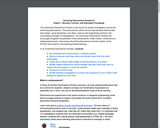
The Anchoring Phenomenon Routine is the launch to student investigation around the anchoring phenomenon. This phenomenon will be the one that students will describe and explain, using disciplinary core ideas, science and engineering practices and crosscutting concepts in investigations. The Anchoring Phenomenon Routine will encourage thoughtful consideration of the phenomenon, initial models, connections to related phenomenon, discussions about the phenomenon and the creation of the KLEWS chart used for documenting student learning. In an Anchoring Phenomenon Routine, students:
● Are presented with a phenomenon or design problem
● Write and discuss what they notice and wonder about from the initial presentation
● Create and compare initial models of the phenomenon or problem
● Identify related experiences and knowledge that they could draw upon to explain the phenomenon or solve the problem
● Construct a KLEWS Chart
● Identify potential investigations to answer the questions on the KLEWS Chart, adding the questions to the chart
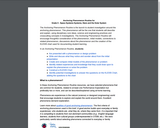
The Anchoring Phenomenon Routine is the launch to student investigation around the anchoring phenomenon. This phenomenon will be the one that students will describe and explain, using disciplinary core ideas, science and engineering practices and crosscutting concepts in investigations. The Anchoring Phenomenon Routine will encourage thoughtful consideration of the phenomenon, initial models, connections to related phenomenon, discussions about the phenomenon and the creation of the KLEWS chart used for documenting student learning. In an Anchoring Phenomenon Routine, students:
● Are presented with a phenomenon or design problem
● Write and discuss what they notice and wonder about from the initial presentation
● Create and compare initial models of the phenomenon or problem
● Identify related experiences and knowledge that they could draw upon to explain the phenomenon or solve the problem
● Construct a KLEWS Chart
● Identify potential investigations to answer the questions on the KLEWS Chart, adding the questions to the chart
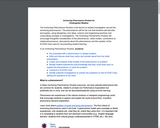
The Anchoring Phenomenon Routine is the launch to student investigation around the anchoring phenomenon. This phenomenon will be the one that students will describe and explain, using disciplinary core ideas, science and engineering practices and crosscutting concepts in investigations. The Anchoring Phenomenon Routine will encourage thoughtful consideration of the phenomenon, initial models, connections to related phenomenon, discussions about the phenomenon and the creation of the KLEWS chart used for documenting student learning. In an Anchoring Phenomenon Routine, students:
● Are presented with a phenomenon or design problem
● Write and discuss what they notice and wonder about from the initial presentation
● Create and compare initial models of the phenomenon or problem
● Identify related experiences and knowledge that they could draw upon to explain the phenomenon or solve the problem
● Construct a KLEWS Chart
● Identify potential investigations to answer the questions on the KLEWS Chart, adding the questions to the chart

The Anchoring Phenomenon Routine is the launch to student investigation around the anchoring phenomenon. This phenomenon will be the one that students will describe and explain, using disciplinary core ideas, science and engineering practices and crosscutting concepts in investigations. The Anchoring Phenomenon Routine will encourage thoughtful consideration of the phenomenon, initial models, connections to related phenomenon, discussions about the phenomenon and the creation of the KLEWS chart used for documenting student learning.
In an Anchoring Phenomenon Routine, students:
● Are presented with a phenomenon or design problem
● Write and discuss what they notice and wonder about from the initial presentation
● Create and compare initial models of the phenomenon or problem
● Identify related experiences and knowledge that they could draw upon to explain the phenomenon or solve the problem
● Construct a KLEWS Chart
● Identify potential investigations to answer the questions on the KLEWS Chart, adding the questions to the chart

The Anchoring Phenomenon Routine is the launch to student investigation around the anchoring phenomenon. This phenomenon will be the one that students will describe and explain, using disciplinary core ideas, science and engineering practices and crosscutting concepts in investigations. The Anchoring Phenomenon Routine will encourage thoughtful consideration of the phenomenon, initial models, connections to related phenomenon, discussions about the phenomenon and the creation of the KLEWS chart used for documenting student learning.
In an Anchoring Phenomenon Routine, students:
● Are presented with a phenomenon or design problem
● Write and discuss what they notice and wonder about from the initial presentation
● Create and compare initial models of the phenomenon or problem
● Identify related experiences and knowledge that they could draw upon to explain the phenomenon or solve the problem
● Construct a KLEWS Chart
● Identify potential investigations to answer the questions on the KLEWS Chart, adding the questions to the chart
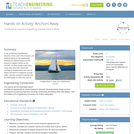
In this activity, students discover the relationship between an object's mass and the amount of space it takes up (its volume). Students learn about the concept of displacement and how an object can float if it displaces enough water, and the concept of density and its relationship to mass and volume.

A conversation with Lisa Ackerman, World Monuments Fund, and Beth Harris, Smarthistory. Created by Beth Harris and Steven Zucker.